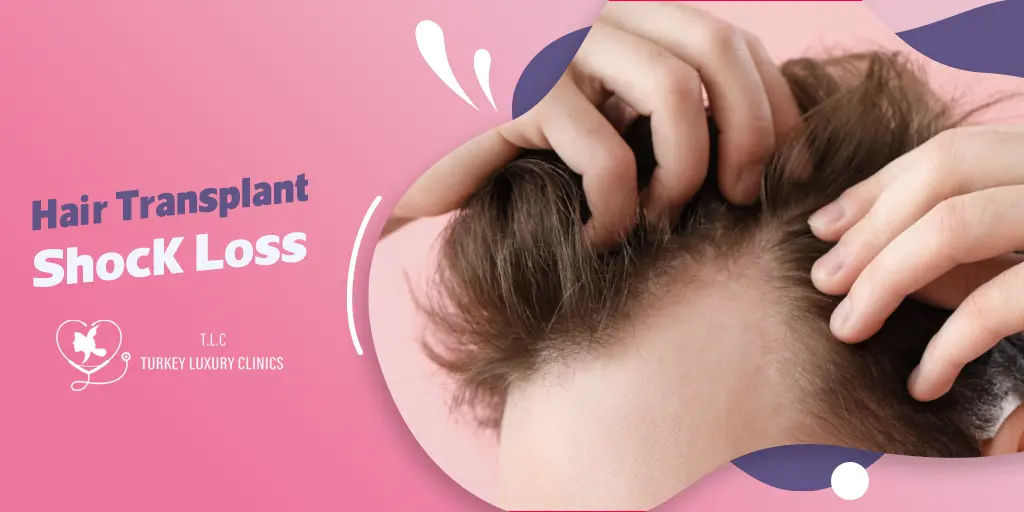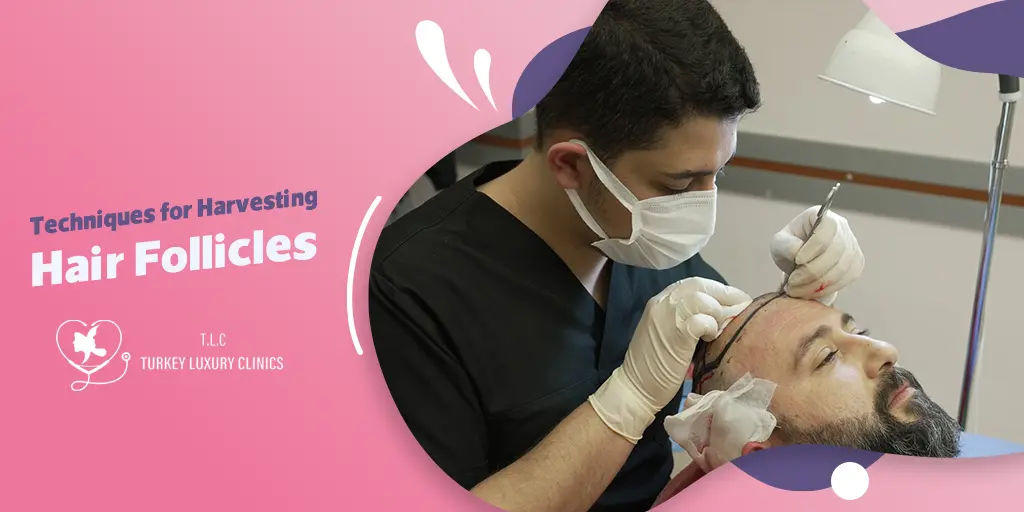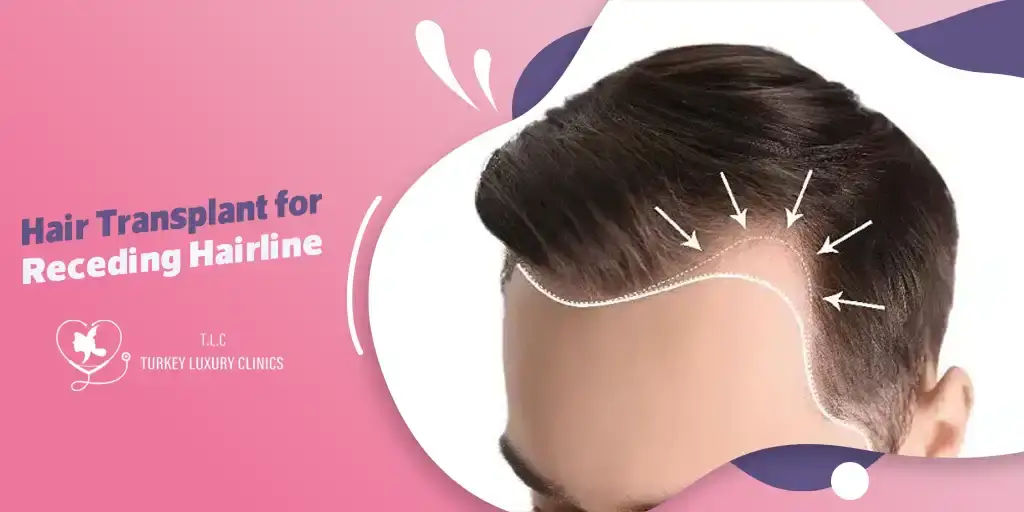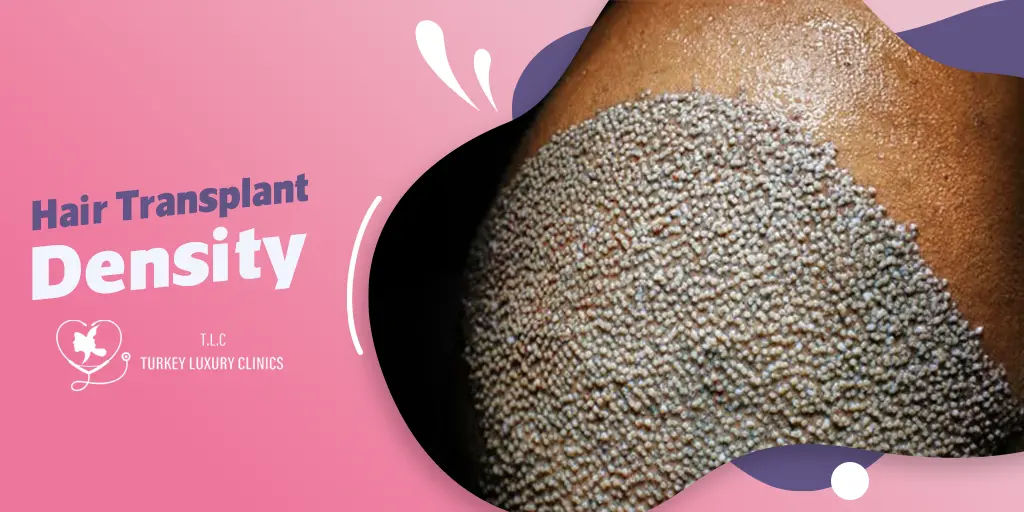- - What is Shock Loss in Hair Transplant
- - Hair Transplant Shock Loss Photos
- - Why Does Hair Shed After Hair Transplant?
- - Hair Transplant Shock Loss Timeline
- - When Does Hair Grow Back After Shock Loss?
- - Does Everyone Experience Shock Loss After Hair Transplant?
- - Factors contribute to shock loss
- - What is Permanent Shock Loss Hair Transplant?
- - How to Prevent Shock Loss After Hair Transplant?
- - How to Enhance Hair Growth After Shock Loss?
- - Hair Transplant with Turkey Luxury Clinics’ Expert Guidance
- - FAQs About Hair Transplant Shock Loss
Hair transplant is a long journey with multiple phases that every patient should understand before taking this life-changing step.
One important phase during recovery is the hair transplant shock loss, which is the temporary and normal shedding of both grafted and native hair following the procedure.
Understanding this phase and following expert guidance can help ensure optimal results.
At Turkey Luxury Clinics, we guide you through every step of the process, providing personalized consultations with qualified hair transplant specialists to plan your journey for the best possible outcome. Feel free to contact us now to evaluate the risks and consequences of your shock hair loss after a hair transplant
What is Shock Loss in Hair Transplant
Shock loss in hair transplant is the temporary shedding of both transplanted hair and existing native hair that commonly occurs after the procedure, usually within the first 1–2 weeks of recovery. This phase is a normal part of healing, triggered by stress on the hair follicles and the natural hair growth cycle.
During hair transplant shock loss, only the visible hair shafts are shed while the follicles remain intact. The shedding is temporary, and the follicles remain healthy, allowing new hair to grow back over time.
Shedding after the hair transplant surgery is not limited to the recipient area; it can occur both in the donor and recipient area.
Hair Transplant Shock Loss Photos
Shock loss in the donor area after hair transplant
Shock loss in the donor area refers to the temporary shedding of hair in the region where follicles are extracted. The harvesting technique largely influences the extent of this shedding.
Advanced FUE technique, such as Sapphire FUE, use sapphire blades to create more precise incisions, minimizing trauma and reducing the risk of shock loss.
The pattern of hair shedding also varies by hair transplant technique. In FUT, where all follicles are removed as a strip, shock loss is usually localized, typically occurring above and below the incision line.
In contrast, with FUE, where follicles are harvested individually, FUE hair transplant shock loss may be more widespread depending on punch size and the surgeon’s technique.
Shock loss in the recipient area after hair transplant
Shock loss in the recipient area, also known as graft area, is the shedding of both native and grafted hair.
It is important to understand that shock loss does not indicate transplant failure, and the final success of a hair transplant can only be assessed 6 to 12 months after the procedure.
Additionally, it is essential to avoid scratching the hair or crusts in the graft area to maintain the integrity of the follicles and prevent follicle shedding.
Why Does Hair Shed After Hair Transplant?
Hair shedding, also known as shock loss, after a hair transplant occurs because the hair follicles enter the resting stage of the growth cycle, called the telogen phase. Telogen is a natural part of the hair cycle, but the trauma from the incisions and implantation places stress on the follicles, which triggers this phase to begin earlier than usual.
Hair Transplant Shock Loss Timeline
Shock loss after hair transplant starts within the first few weeks after the procedure, typically 2 to 4 weeks, and can last up to 3 months. After that new hair starts to grow during the month 3 to 4 months of hair transplant recovery timeline. Read more about hair transplant after 4 months
Early phase shock loss: week 2 to 4
Hair shedding after transplant can occur as early as 10 days after the procedure, during the 2nd week. At first, you may notice fine hairs on your pillow or during hair wash. After 2 weeks, the hair transplant shock loss recipient area will be apparent. In week 4, you may notice all the natural hair and transplanted hair in the recipient area fall out.
Intermediate phase of shock loss: week 4 to 8
Shedding of hair continues through these weeks and may reach its maximum level, which may appear as complete loss of visible hair.
Hair transplant appearance during week 4 to 8 typically shows only follicle spots spread across the scalp.
It does not resemble baldness nor normal hair growth. However, the extent of shedding varies between patients, with some showing complete shedding and others showing a mix of fallen hair and remaining normal hair.
Final phase of shock loss: week 8 to 12
Shedding stabilizes at this stage. Patients may experience social and emotional stress due to the appearance of hair loss, even though they can use hats or scarves to cover their head. By the end of this stage, new fine hair will start to grow.
Shock loss hair transplant timeline table:
When Does Hair Grow Back After Shock Loss?
Hair growth after shock loss typically begins 3 to 6 months post-transplant, as the hair cycle reactivates and initiates new growth.
In most patients, hair transplant shock loss duration lasts around two to eight weeks, occasionally extending up to 12 weeks.
Shock loss is generally expected to fully stop around 4 to 5 months after the hair transplant, marking the start of hair transplant shock loss recovery.
Initially, the new hair appears in patchy areas as fine, delicate strands about 1–3 mm long between the fourth and sixth months, gradually spreading to cover the entire scalp.
By around 6 months, the hair starts to thicken and mature, reaching a length of approximately 5–10 mm and gaining more volume. However, the exact timing of hair regrowth after hair transplant shedding varies between patients.
Final results also differ individually, but on average, full, natural-looking hair can be expected around 12 months after the procedure.
Does Everyone Experience Shock Loss After Hair Transplant?
Actually, not everyone who gets a hair transplant will experience a shock loss stage, but for most patients, around 30% to 80%, it does occur, as the procedure is somewhat invasive to the hair follicles.
However, It's possible to have no shock loss after a hair transplant, as it varies by individual, with some experiencing no noticeable shedding and others experiencing significant loss
Factors contribute to shock loss
Several factors can contribute to shock loss, including the surgical technique, the surgeon’s skills and experience, the patient’s health and post hair transplant care, and individual susceptibility.
1. Surgeon skills and experience
An expert surgeon handles hair follicles carefully, harvesting and inserting them gently to minimize trauma in both the donor and recipient areas.
2. Hair transplant technique
Shock loss after FUE hair transplant and overall shock loss extent vary depending on both harvesting and grafting techniques. In general, FUE tends to cause less shock loss compared to FUT. Advanced methods like Sapphire FUE, which use precise blades, further reduce the risk of shock loss in the donor area, while DHI technique, which uses a DHI pen to place the follicles, reduces shedding in the graft area.
3. Overall Health
Patients with conditions that affect hair—such as hormonal imbalances or localized hair issues—can be more susceptible to shock loss. Additionally, individuals with malnutrition or poor overall health are also at higher risk.
4. Individual Susceptibility
Some individuals are naturally more prone to shock loss due to factors such as hair type, scalp sensitivity, and genetic predisposition.
5. Aftercare Effect
Proper post transplant care plays a crucial role in minimizing shock loss by following the surgeon’s instructions for washing, avoiding scratching, protecting the scalp from trauma, and using recommended medications or treatments can help keep the follicles healthy and reduce excessive shedding.
What is Permanent Shock Loss Hair Transplant?
Many patients naturally worry: Is shock loss permanent after a hair transplant? In most cases, it is not permanent, shock loss is a temporary phenomenon that starts and ends on its own. However, in rare cases, it can lead to permanent shedding.
Permanent shock loss occurs when hair follicles are irreversibly damaged and cannot recover or grow back.
This is uncommon and usually results from significant trauma to the follicles, often due to a poorly skilled surgeon or improper handling during the procedure.
Inexperienced handling during incision, follicle extraction, or insertion, or the use of older, less precise techniques, can increase the risk of permanent follicle damage.
Poor aftercare may also contribute. After a transplant, the scalp requires gentle washing, proper support with medical pillows, and the use of recommended treatments such as PRP and soft, sulfate-free shampoos. Following these guidelines helps minimize the risk of long-term hair loss.
Individual patient factors and medical conditions play a role as well. Variations in blood supply, chronic diseases, and other health conditions can affect follicle health, potentially leading to prolonged resting phases or follicle death.
Additionally, hair follicles sensitive to DHT (dihydrotestosterone) may be lost more quickly.
Differences Between Temporary vs. Permanent Shock Loss:
How to Prevent Shock Loss After Hair Transplant?
To minimize shock loss you need to commit to post-operative care instructions, including using minoxidil and finasteride, and maintaining overall health and good nutrition.
To avoid shock loss after hair transplant follow these recommendation:
1.Search for experienced Surgeon: Choose a surgeon with expertise in both FUT and FUE techniques to minimize tissue trauma.
2.Use less invasive techniques: Opting for less invasive methods like FUE can reduce trauma.
3.Be precise during graft placement: Ensure grafts are implanted gently and strategically.
4.Strict to post-operative care: Follow your surgeon's instructions carefully to promote healing and minimize disruption to grafts.
5. Use medications: Medications like minoxidil and finasteride can help stimulate hair growth and minimize shedding.
How to Enhance Hair Growth After Shock Loss?
Hair transplant combined with PRP is a popular way to accelerate growth of shed hair and fine delicate hair during hair transplant recovery (Platelet-Rich Plasma) Therapy: PRP injections can be used post-surgery to stimulate blood flow and healing in the transplanted area
Hair Transplant with Turkey Luxury Clinics’ Expert Guidance
Turkey Luxury Clinics specializes in plastic surgery and other medical specialties, with a mission to help patients improve both appearance and health. Our hair transplant services are designed to be safe, effective, and natural-looking.
Whether you are in the recovery phase or still planning your hair transplant, contact us today for personalized advice and expert guidance to restore your hair and confidence.












.webp)
.webp)
.webp)
.webp)

